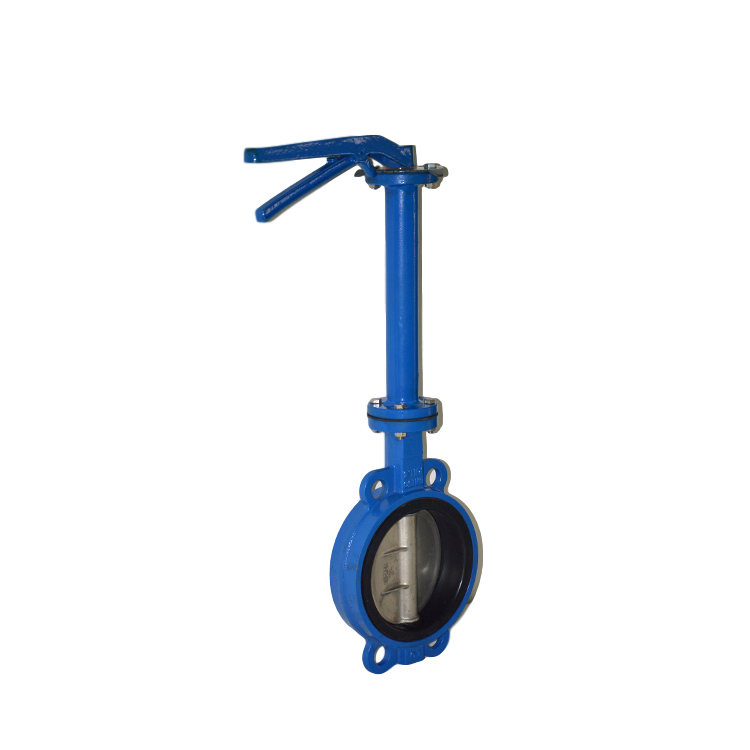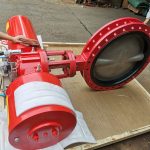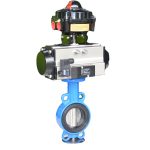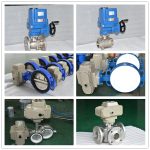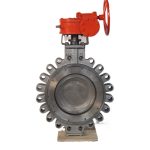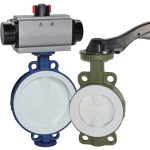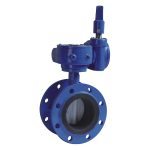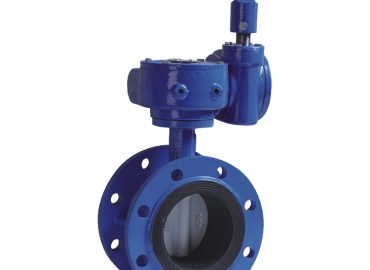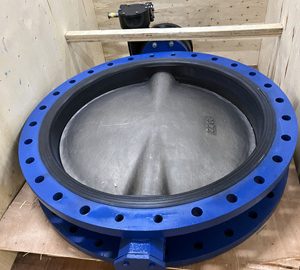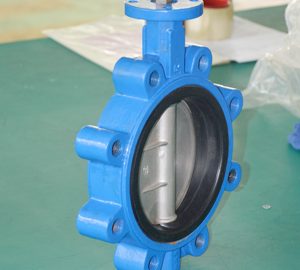Gate valves and butterfly valves are both essential components of fluid control systems used across various industries. These valves provide effective flow control and are widely used in industrial applications. However, it’s crucial to distinguish between the two types of valves to ensure that you are using the right valve for your specific needs. Understanding the differences in design, construction, flow control mechanisms, operating mechanisms, and pressure and temperature limitations can help you select the right valve for your application. In this article, we will provide an in-depth comparison of gate valves and butterfly valves, exploring their similarities, differences, and when to use each type of valve.
Introduction
Wafer butterfly valve differ significantly in their design, construction, flow control, operating mechanisms, and pressure and temperature limitations. Gate valves operate by raising or lowering a gate to control fluid flow through the valve, while butterfly valves use a disc or plate that rotates to regulate fluid flow. Gate valves are generally larger and heavier than butterfly valves and are suitable for high-pressure applications that require precise flow control. In contrast, butterfly valves are small, compact, and ideal for low-pressure applications that require quick response times. The choice between a gate valve and a butterfly valve depends on the application-specific requirements, including pressure, temperature, flow rate, and the degree of flow control needed.
Definition and Overview
Gate valves and butterfly valves are both types of fluid control valves that are essential to various industries, including oil and gas production, water treatment, chemical processing, and more. These valves regulate the flow of fluids through a pipeline or other system, controlling the amount of fluid that passes through the valve and the rate at which it flows. Gate valves use a gate or wedge to control fluid flow, while butterfly valves use a disc or plate that rotates to regulate fluid flow. Understanding the differences between these two valves, including their design, construction, flow control, and operating mechanisms, is crucial to selecting the right valve for your specific application. In the following sections, we will explore these differences in depth, highlighting the pros and cons of each type of valve and the applications for which they are best suited.
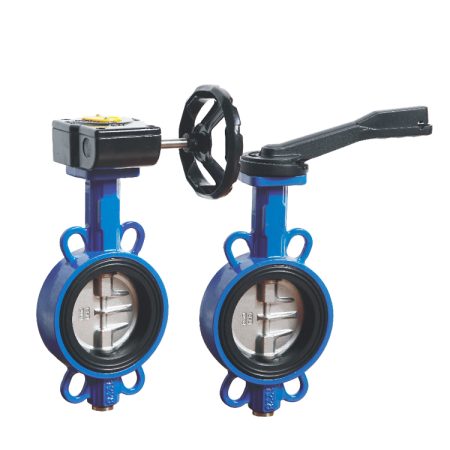
Importance of Valve Types in Fluid Control Systems
Valve types such as gate valves and butterfly valves are crucial to the efficient and safe operation of fluid control systems. These valves help regulate the flow of fluids within a system, providing precise control over pressure, temperature, and flow rate. Without the appropriate valve type, fluids may flow uncontrollably, leading to costly leaks, damage to equipment, and safety hazards. Selecting the right valve type for your system is essential to achieving optimal efficiency, minimizing downtime, and reducing overall costs associated with system maintenance and operation. Valve suppliers and manufacturers can help you choose the right valve type for your specific needs, ensuring that you achieve maximum reliability from your fluid control system.
Design and Construction Differences
Design and construction differences between gate valves and pneumatic butterfly valve are significant. Gate valves typically have larger sizes and heavier construction than butterfly valves, making them suitable for high-pressure applications that require precise flow control. The gate or wedge in a gate valve controls fluid flow, which moves up or down to regulate the fluid’s flow rate. In contrast, butterfly valves are smaller, with compact construction that offers quick response times suitable for low to medium pressure systems. The disc or plate in a butterfly valve rotates to regulate fluid flow. The difference in design and construction between the two valve types can affect the valve’s durability, ease of use, and ease of maintenance.
Butterfly Valve Design and Construction
Butterfly valves are designed with a circular body and a disc or plate installed at the center of the valve. The disc rotates 90 degrees to control fluid flow. In the open position, the disc lies parallel to the direction of the fluid flow, allowing fluid to pass through the valve with minimal obstruction. In the closed position, the disc rotates 90 degrees to stand perpendicular to the flow, blocking fluid flow through the valve. The disc shape and construction material offer quick response times suitable for low- to medium-pressure systems, making them ideal for use in industries such as water treatment, HVAC, and food and beverage production. The valve’s lightweight, smaller size, and compact construction make it easy to operate and maintain, making it a cost-effective solution for many applications.
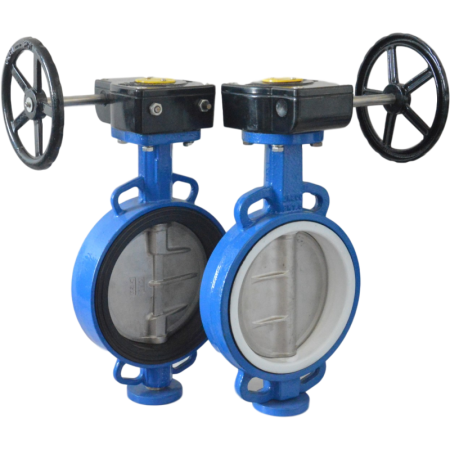
Gate Valve Design and Construction
Gate valves are typically designed with a rectangular or circular body and a gate or wedge inside the valve that moves up or down to control fluid flow. The valve opens and closes by moving the gate or wedge along the vertical axis perpendicular to the flow of fluid. When the gate is in the fully open position, fluid can flow freely through the valve with minimum obstruction. When the gate is in the fully closed position, it creates a tight seal that completely blocks fluid flow. Gate valves are commonly used in high-pressure and high-temperature applications where precise and slow flow control is required. With their rugged design and heavy construction, gate valves are more durable than butterfly valves but require more energy to operate and maintain. The gate or wedge is commonly made of materials such as stainless steel, brass, or cast iron, and the body is typically cast from iron or steel.
Differences in Flow Control
Butterfly valve and gate valve have significant differences in flow control. Butterfly valves use a circular disc or plate to regulate fluid flow. The process involves rotating the plate to control the amount of fluid that passes through the valve. Butterfly valves are suitable for low-pressure systems where quick response times and low maintenance are favored over precise flow control. The disc design makes butterfly valves a great option for shutoff applications. In contrast, gate valves use a wedge or gate to control fluid flow, moving either up or down along the valve’s vertical plane. Gate valves are ideal for high-pressure applications that require precise and slow flow control. They enable a detailed and exact regulation of fluid flow as they allow fluid to pass through in a straight line which offers less resistance to flow. In summary, while the butterfly valve offers more straightforward, quick-response flow control, the gate valve allows precise and slow-flow regulation.
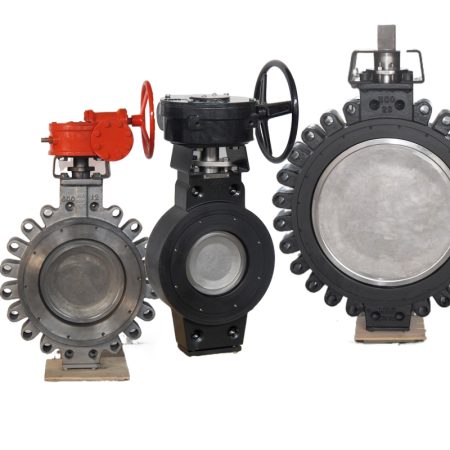
Butterfly Valve Flow Control
Butterfly valves utilize a disc/plate positioned in the center of the valve, which in turn rotates 90 degrees to control fluid flow. The disc lies parallel to the fluid flow in the open position, allowing maximum flow of fluid with minimal obstacles. The plate then rotates perpendicular to the fluid flow to the closed position, which blocks the fluid flow completely. While butterfly valves provide quick response times ideal for low-pressure systems, flow control precision cannot be 100% accurate since friction can cause slippage. Also, the valve can only be partially opened, which is unsuitable for high-pressure applications. Despite these limitations, butterfly valves offer good shutoff capability and are favored in HVAC, chemical processing, and food and beverage industries.
Gate Valve Flow Control
Gate valves use a wedge or gate inside the valve’s body to regulate fluid flow. The gate moves either up or down along the vertical axis perpendicular to the flow of fluid. Gate valves allow precise and slow-flow regulation and offer 100% accurate shut-off capabilities. The wedge controls fluid flow by moving up and down in a straight line, offering little resistance to the fluid’s movement. Gate valves are best suited for high-pressure applications where fluid flow needs to be precisely regulated. However, gate valves are not suitable for quick response times since they require more energy to operate, and the gate can become wedged in place during operation. Gate valves are commonly found in the oil and gas industry, chemical processing, and other high-pressure applications that require accurate flow control for safe and efficient operation.
Differences in Operating Mechanism
Gate valves and butterfly valves use different operating mechanisms to control fluid flow through their respective valves. Butterfly valves use a rotating disc or plate, typically controlled by a handle, gearbox, or actuator. This operating mechanism makes opening or closing the valve quick and easy, and the operator can quickly adjust the valve’s position to regulate fluid flow. In comparison, gate valves have a more complex mechanism involving a gate or wedge that moves vertically to open or close the valve. The operator must turn the handwheel, lever or motor to move the gate up or down. The process can be slow, making it more difficult to make precise adjustments, but gate valves provide precise control over fluid flow, offering 100% accurate shut-off capabilities.
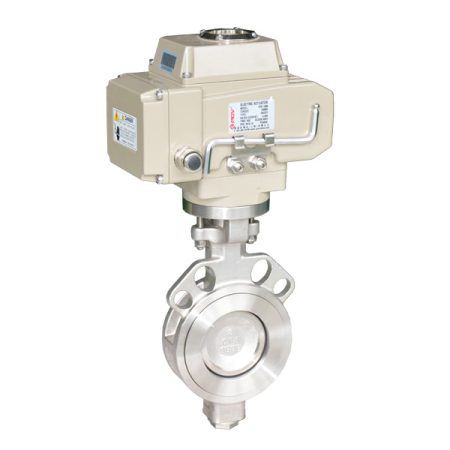
Butterfly Valve Operating Mechanism
Butterfly valves have a simple operating mechanism that makes them easy to use and maintain. The valve’s rotating disc or plate, typically operated by a handle, gearbox or actuator, can be quickly adjusted to regulate fluid flow. The valve operates by turning the disc or plate clockwise or counterclockwise to open or close the valve. The fast response time of the operating mechanism makes butterfly valves ideal for low-pressure applications that require a quick response to changes in fluid flow. Operators can easily adjust the valve’s position to control fluid flow, making butterfly valves ideal for use in HVAC, chemical, and food and beverage industries.
Gate Valve Operating Mechanism
Gate valves have a more complex operating mechanism than butterfly valves, but they offer greater precision and control over fluid flow. The gate or wedge inside the valve is moved vertically to open or close the valve, which typically requires turning the handwheel, lever, or actuator. Operating a gate valve can be slower and requires more energy than operating a butterfly valve, but it allows for precise adjustments to fluid flow. The gate or wedge can be moved incrementally, providing precise control over the amount of fluid that passes through the valve. The valve’s accurate shut-off capability is also aided by the fast-closing mechanism, which makes it possible to quickly halt fluid flow in an emergency. Gate valves are commonly used in applications that require accurate and precise control over fluid flow, such as the oil and gas industry, chemical processing, and other high-pressure applications.
Pressure and Temperature Limitations
The pressure and temperature limitations of butterfly valves and gate valves differ based on their construction and design. Butterfly valves are typically used for low to medium pressure systems, making them best suited for applications in the water and HVAC industries, with a maximum pressure rating of 300 PSI, and their temperature ranges from -40°F (-40°C) to 300°F (149°C). Gate valves, due to their heavy construction, are capable of withstanding high-pressure systems, making them well suited for use in oil and gas exploration and production applications. The maximum pressure rating for a gate valve depends on the type of wedge material and its temperature rating, with a rating that can range from 285 PSI to 1500 PSI or higher. The temperature rating for gate valves can range from -20°F (-29°C) to 1,000°F (538°C). In summary, both valve types come with specific pressure and temperature limitations, and selecting the right valve for your application can make a significant difference in their performance, reliability, and safety.
Butterfly Valve Pressure and Temperature Limitations
Butterfly valves are best suited for low to medium pressure systems, with a maximum pressure rating of 300 PSI. The valve’s temperature limit ranges from -40°F (-40°C) to 300°F (149°C). While butterfly valves are versatile and can handle a range of fluid types and processes, their pressure and temperature limits can make them unsuitable for high-pressure or high-temperature applications, making them less suited for industries such as oil and gas exploration and production. In summary, butterfly valves must be chosen based on the fluid’s pressure and temperature demands for optimal performance, reliability, and safety.
Gate Valve Pressure and Temperature Limitations
Gate valves can withstand high-pressure systems, and their maximum pressure rating depends on the type of gate or wedge material and its temperature rating. For instance, an ASTM A216 WCB material gate valve can have a pressure rating of up to 285 PSI at 100°F and 2000 PSI at 100°F. The maximum temperature limit for gate valves can range from -20°F (-29°C) to 1,000°F (538°C), making them ideal for use in high-pressure and high-temperature applications found in industries such as oil and gas exploration and production. Nevertheless, gate valves may not be appropriate for low-pressure systems since they may not seat well and may cause leakages due to the lower differential pressure that their operating designs are not best suited for. Thus, choosing the appropriate materials and designs is crucial when selecting a gate valve for your application.
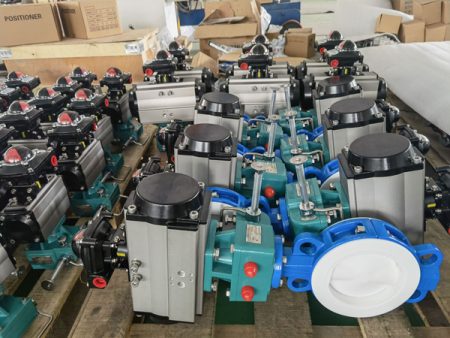
Importance of Choosing the Right Valve
Selecting the right valve for your application is crucial for safe and efficient operation, as each valve type has its unique features and limitations. Using an incorrect valve could results in inefficient operation, unexpected downtime, or even endangering the lives of those involved. Careful consideration must be taken when selecting valves to ensure appropriate flow control, pressure and temperature requirements are met. Factors to consider when selecting a valve include the fluid properties, environment, pressure and temperature requirements, and valve type. The right valve will provide adequate flow control while maintaining system efficiency and without exceeding the operating limits. It is therefore essential to select a valve from a reputable manufacturer and engage the services of experienced valve professionals to help assess the application and select the most optimal valve.
Gate valve vs ball valve
In the realm of valve manufacturing, understanding the distinction between gate valves and ball valves is crucial. Both play pivotal roles in controlling flow within a system, yet their mechanisms and areas of application differ significantly. Let’s delve into the specifics:
Gate Valves: Characterized by their ability to start or stop fluid flow, gate valves are renowned for their precision and reliability. They use a ‘gate’ or ‘wedge’ that moves up and down to control the fluid flow.
Ball Valves: Embodying robustness and swift operation, ball valves utilize a rotating ball with a hole through its center to control fluid flow. When aligned with the pipeline, the hole allows flow; when it’s perpendicular, the flow is blocked.
In terms of durability, both these valves exhibit exceptional longevity and performance under rigorous conditions, thanks to stringent quality control and adherence to industry-specific standards in their manufacture.
Factors to Consider
When selecting a valve, several factors must be considered, including the fluid properties, the environment in which the valve will be used, pressure and temperature requirements, and valve type. The fluid’s characteristics, such as viscosity, acidity, and corrosiveness, must be considered to ensure compatibility with the valve material. Additionally, the valve’s environment must be considered based on whether it is exposed to moisture, humidity, or other environmental factors. The pressure rating and maximum temperature rating for the valve must also be considered to ensure safe and efficient operation. Finally, the type of valve plays a crucial role in determining its suitability for a particular application. The appropriate valve type can provide optimal flow control, while the wrong type could result in inefficiencies, leaks, and other issues, leading to system failure. It is essential to conduct a thorough assessment of these factors to select the right valve for your application, ensuring safe and efficient operation.
Applications for Butterfly Valves
Butterfly valves are versatile and offer fast response times, making them suitable for many applications, including large-scale fluid systems. Due to their lightweight design and small footprint, they are ideal for tight piping systems where space is an issue. Butterfly valves’ shutoff capability makes them suited for applications where complete flow shut-off is necessary, such as waterworks, chemical processing, and food and beverage industries. They are also commonly used in air conditioning and ventilation systems, where precise flow control is crucial for system efficiency. Furthermore, butterfly valves provide reliable and efficient flow control in water treatment plants and firewater mains. In summary, butterfly valves are versatile and have many applications that require precise flow control, a fast response time, and reliable shutoff capability.
Applications for Gate Valves
Gate valves are used extensively in applications that require precise flow control under extreme conditions. For instance, gate valves are common in the oil and gas industry for their ability to regulate fluid flow in high-pressure and high-temperature systems. These valves are also used in steam lines, water treatment plants, petrochemical processing, and many industrial applications where precision flow control is necessary. Gate valves’ design allows for bi-directional flow, making them optimal for many systems where liquids or gases must flow in two directions. Another use for gate valves is in fire protection systems, as they provide quick shutoff capabilities in emergencies. In summary, gate valves are essential for a range of applications where precision flow control and reliable shutoff capabilities are necessary under extreme conditions.
Conclusion
As we have discussed, gate valves and butterfly valves are two popular valve types used for regulating fluid flow, but they have unique design considerations that make them ideal for different applications.
Butterfly valves use a rotating disc or plate to regulate fluid flow and have a simple, lightweight design. They are ideal for low to medium pressure systems and are well-suited for applications in the water and HVAC industries.
In contrast, gate valves use a gate or wedge to regulate fluid flow and have a more complex, heavy-duty design. They can withstand high-pressure systems and are best suited for industries such as oil and gas exploration and production, where precision flow control is critical.
When selecting a valve, it’s essential to consider the fluid properties, environment, pressure and temperature requirements, and valve type. This will help to ensure that the valve provides optimal flow control and efficient operation without exceeding its maximum operating limits.
Ultimately, the right valve selection for your application is crucial for safe and efficient operation, and selecting from reputable manufacturers is critical. Valve professionals can assist in assessing applications and selecting the most appropriate type of valve for the system’s requirements.
In conclusion, understanding the difference between gate valves and butterfly valves is essential when selecting the right valve for your application. Choosing the right valve will ensure efficient operation, reliable shutoff capabilities, and a safe operating environment. With proper selection and installation, high-quality valves can provide long-lasting, efficient, and safe flow control in many different applications.
Summary of Key Points
In summary, gate valves and butterfly valves each have distinct design features that make them suitable for different applications. Butterfly valves use a rotating disc or plate to regulate fluid flow and are ideal for low to medium pressure systems in industries such as water and HVAC. Gate valves, on the other hand, have a more complex, heavy-duty design and use a gate or wedge to regulate fluid flow, making them optimal for high-pressure systems in industries such as oil and gas exploration and production. When selecting a valve, factors such as fluid properties, environmental conditions, pressure and temperature requirements, and valve type must be considered to ensure optimal flow control, efficient operation, and safe operating conditions. By selecting from reputable manufacturers and engaging the services of experienced valve professionals, the most appropriate valve type can be selected to provide optimal performance and reliability in any application.
Final Thoughts on Choosing a Valve
The importance of choosing the right valve for your application cannot be overstated. Careful consideration must be given to factors such as fluid properties, environmental conditions, pressure and temperature requirements, and valve type to ensure optimal flow control, efficient operation, and reliable shutoff capabilities. Selecting from reputable manufacturers and engaging the services of experienced valve professionals is critical in ensuring that the most appropriate valve type is selected to provide the level of performance and reliability required for your system. By taking the time to carefully assess your system’s requirements and select the right valve, you can ensure a safe, efficient, and reliable flow control system for any application.


